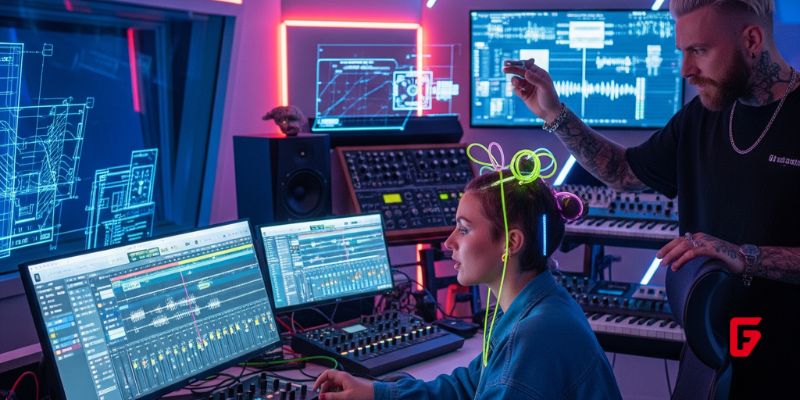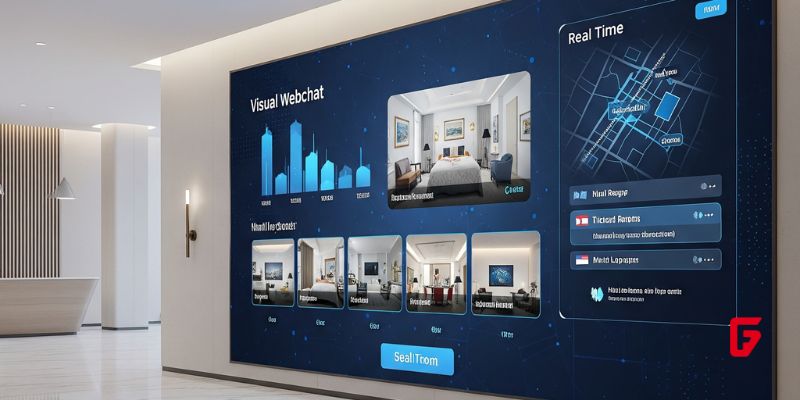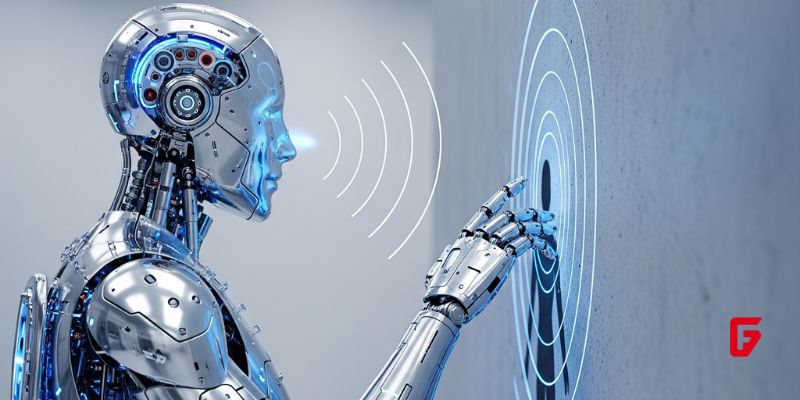
By futureTEKnow | Editorial Team
As we venture into the future, immersive technologies are set to redefine how we interact with the world around us. From virtual reality (VR) and augmented reality (AR) to mixed reality (MR), these innovations are not just trends but transformative forces across various industries. In the upcoming years, we can expect to see a significant rise in the adoption of immersive technologies, driven by advancements in artificial intelligence, enhanced user experiences, and the growing demand for engaging content.
This article explores nine immersive technologies that are poised to shape our lives, revolutionizing sectors such as healthcare, education, entertainment, and retail. Join us as we delve into the future of immersive experiences and discover how they will continue to evolve and influence our daily interactions.
Holographic displays are set to revolutionize how we interact with digital content in the coming years. These cutting-edge devices create stunning three-dimensional images that appear to float in mid-air, visible from multiple angles without the need for special glasses. By harnessing the wave properties of light, holographic displays use lasers and specialized optical elements to generate lifelike 3D visuals that can be seamlessly integrated into our everyday environment.
They are redefining how we experience extended reality (XR) by delivering stunningly lifelike 3D visuals that merge seamlessly with the physical world. Unlike traditional screens, these displays use advanced light-field technology to create depth-rich, immersive images that can be viewed naturally from any angle, enhancing realism and reducing common issues like eye strain.
Telepresence technology is basically how we connect and collaborate across distances, making it a key player in the immersive tech landscape of the coming years. This innovative solution allows users to feel as if they’re physically present in a remote location, whether through advanced video conferencing, holographic projections, or even robotic avatars.
Telepresence, powered by extended reality (XR), is transforming how we connect and collaborate across distances. By blending virtual, augmented, and mixed reality, XR enables users to feel fully present in remote locations or interact with others as if they were physically together. In healthcare, for instance, XR telepresence allows doctors to consult on surgeries or provide patient care remotely with precision and immediacy. This technology bridges physical gaps, offering richer, more engaging connections for work, learning, and even personal relationships
Wearable technology is now in our daily lives, becoming an integral part of the immersive tech landscape in the coming years. From smartwatches that seamlessly blend into our fashion choices to health-monitoring devices that provide real-time insights, wearables are evolving beyond mere accessories.
Wearable technology is rapidly evolving, particularly within the realm of extended reality (XR), which includes augmented reality (AR) and virtual reality (VR). As industries like healthcare, education, and retail adopt XR wearables, they are transforming how we interact with technology—enabling virtual training simulations, immersive shopping experiences, and enhanced communication methods that bridge gaps for individuals with disabilities.
The future of wearable technology in XR promises not only to enhance personal experiences but also to reshape professional environments across various sectors.
Haptic technology is transforming our digital interactions by bringing the sense of touch to the forefront of user experiences. This innovative technology simulates tactile sensations, allowing users to feel vibrations, forces, and motions when interacting with devices. From smartphones that respond to taps and swipes to advanced VR gloves that mimic real-world textures, haptics enhances engagement across various industries.
This technology is bridging the gap between the digital and physical worlds, making interactions more intuitive and realistic, and is crucial for applications ranging from gaming to training simulations, where the ability to perceive texture, weight, and shape can significantly impact the effectiveness of the experience.
Spatial computing is deeply intertwined with Extended Reality (XR), enhancing its capabilities across Augmented Reality (AR), Virtual Reality (VR), and Mixed Reality (MR). By integrating advanced technologies like sensors, cameras, and AI-driven software, spatial computing enables XR to create immersive, interactive experiences that merge the physical and digital worlds. In AR, spatial computing overlays digital content onto real-world environments, allowing for precise tracking of user movements and seamless interaction with virtual objects.
For VR, it helps map and track user actions in fully virtual spaces, creating more engaging simulations. In MR, spatial computing blends real and virtual elements to enable users to interact with digital objects as if they were part of the physical world.
Drone technology is rapidly evolving, and its integration with extended reality (XR) is creating exciting new possibilities for both enthusiasts and professionals. Users can now pilot virtual drones in immersive environments, blending the thrill of flight with the accessibility of VR. This platform not only provides an engaging way to learn drone piloting skills but also allows for creative exploration within mixed reality settings.
This is giving us the ability to simulate real-world drone operations in virtual spaces and enhancing training, entertainment, and even live event production, making drone flight a more interactive and dynamic experience for users everywhere.
360 content is becoming an essential component of the extended reality (XR) landscape, offering users immersive experiences that bridge the gap between the physical and digital worlds. As businesses increasingly adopt XR technologies, 360-degree videos and environments provide a unique way to engage audiences, allowing them to explore and interact with content in a more personal and impactful manner.
This trend is particularly evident in sectors like education, marketing, and entertainment, where 360 content enhances storytelling and user engagement. By leveraging this technology, companies can create memorable experiences that not only capture attention but also foster deeper connections with their audiences, making it a pivotal tool for brands looking to thrive in an increasingly competitive digital space.
Voice control offers a hands-free, intuitive way to navigate virtual worlds by integrating speech AI with XR applications, becoming more accessible and natural to use, eliminating the need for cumbersome controllers or traditional input methods.
Whether it’s issuing voice commands to explore a VR landscape, dictating text in AR smart glasses, or receiving spoken instructions in a mixed reality workspace, voice technology enhances immersion and usability. This innovation not only simplifies interactions but also broadens accessibility, empowering users with disabilities and enabling seamless multitasking in both personal and professional XR applications.
Si-OLED (Silicon Organic Light-Emitting Diode) technology is redefining how we experience extended reality (XR) by delivering ultra-high-resolution visuals in compact, lightweight displays. These micro displays are ideal for augmented reality (AR) and virtual reality (VR) applications, offering lifelike image quality with deep contrast and vibrant colors.
By integrating OLED pixels onto silicon wafers, Si-OLED achieves pixel densities exceeding 4,000 ppi, ensuring sharp visuals even in small form factors like smart glasses or VR headsets. This innovation not only enhances immersive experiences but also reduces device bulk, making XR wearables more comfortable and practical for everyday use
The progressive rise of immersive technologies like VR, AR, and MR, is not just a passing trend but a transformative force reshaping industries and daily life. From revolutionizing education and healthcare to enhancing entertainment and retail experiences, these technologies are breaking barriers between the physical and digital worlds. With advancements in AI integration, spatial computing, and accessibility features, immersive tools are becoming more intuitive, inclusive, and impactful than ever before.
Founded in 2018, futureTEKnow is a global database dedicated to capturing the world’s most innovative companies utilizing emerging technologies across five key sectors: Artificial Intelligence (AI), immersive technologies (MR, AR, VR), blockchain, robotics, and the space industry. Initially launched as a social media platform to share technology news, futureTEKnow quickly evolved into a comprehensive resource hub, spotlighting the latest advancements and groundbreaking startups shaping the future of tech.

Block3 introduces a prompt-to-game AI engine, enabling users to create and own Web3 games and assets with generative AI and blockchain integration.

Groq expands into Europe with a new Helsinki data center, bringing low-latency AI inference, sustainable energy, and compliance for European enterprises.

The UK Space Agency has announced a £75M mission to remove space debris and protect vital satellite networks.

Mozart AI launches a next-gen digital audio workstation, empowering artists with AI co-production, natural language commands, and creative control.

Chatlyn lands €8M to build the industry’s first AI-powered visual webchat, unifying hotel guest communications and streamlining bookings with advanced automation.

India’s rapid progress in space technology is making affordable launches and advanced satellite services available to the global market, positioning the nation as a leader in the new space economy.

Paris-based Massive Dynamic has raised €3M to accelerate AI-driven automation in digital marketing, enhancing campaign efficiency and analytics for brands.

MIT’s latest innovation lets humanoid robots detect movement behind walls using AI and radio signals.

Explore how Carnegie Mellon’s new noninvasive BCI enables real-time, finger-level robotic hand control.

Discover if Surge AI can maintain its market edge amid automation and competition. Learn about its strengths, challenges, and future in data labeling.

You.com raises $50M Series B to launch its AI productivity engine, redefining search for knowledge workers and enterprises.

Throne’s AI-powered toilet device uses computer vision to analyze gut health at home, offering privacy-focused, real-time health insights and early detection.
futureTEKnow is focused on identifying and promoting creators, disruptors and innovators, and serving as a vital resource for those interested in the latest advancements in technology.
© 2025 All Rights Reserved.
To provide the best experiences, we use technologies like cookies to store and/or access device information. Consenting to these technologies will allow us to process data such as browsing behavior or unique IDs on this site. Thanks for visiting futureTEKnow.